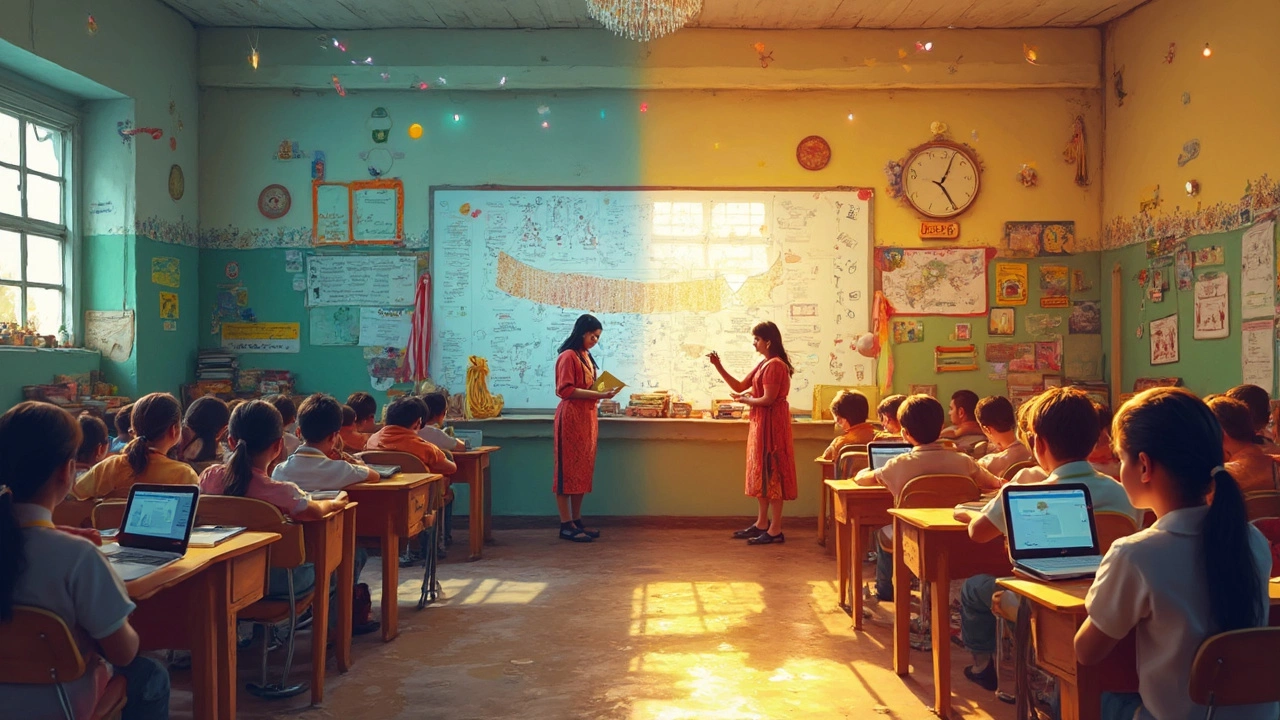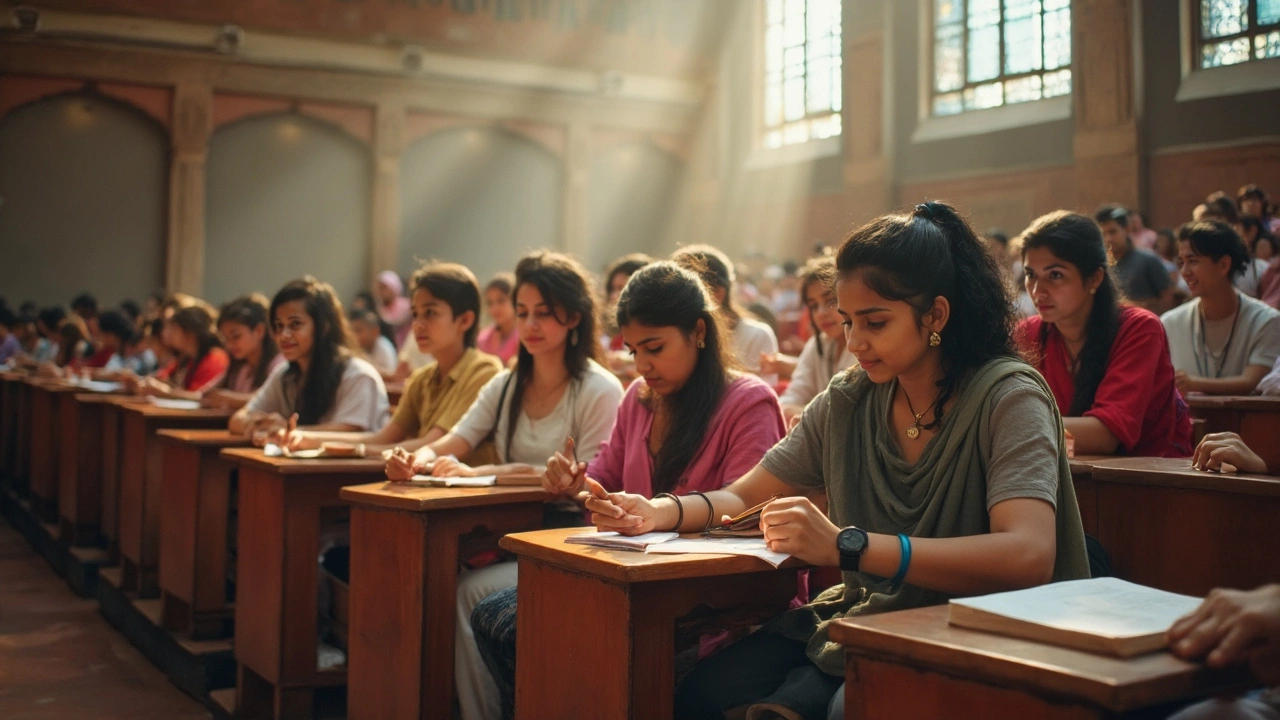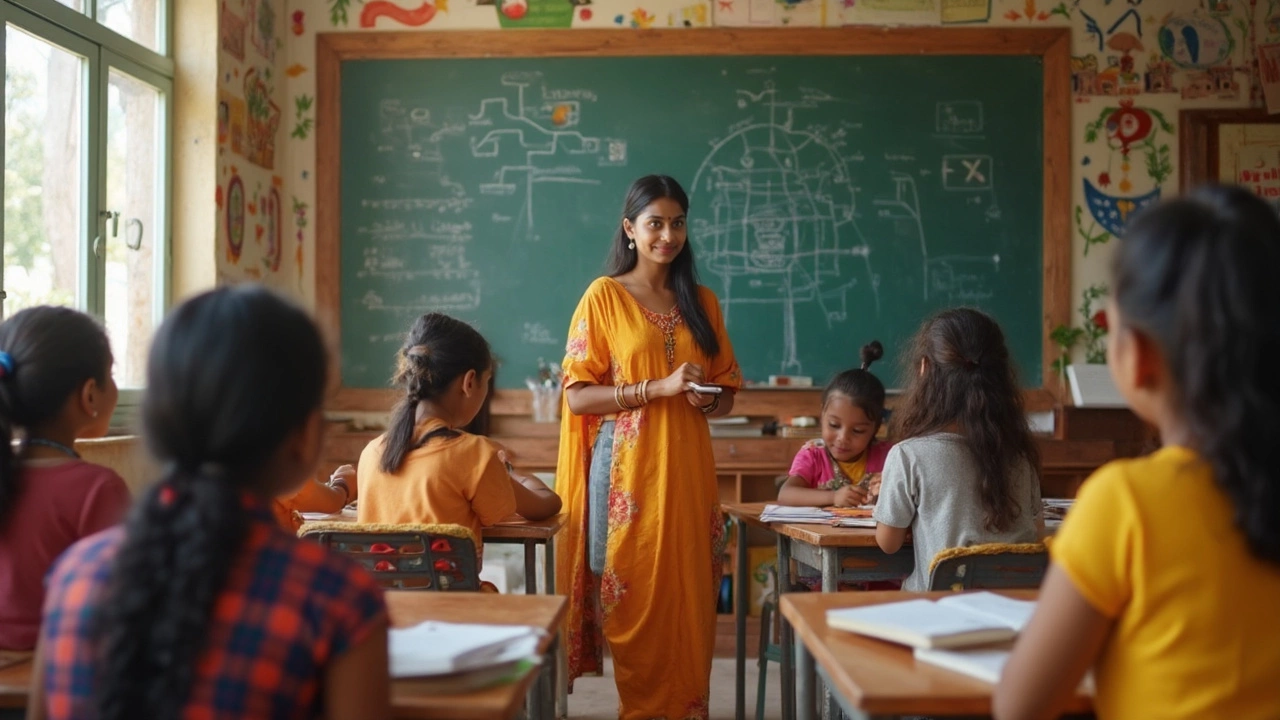Hold up—before anyone claims CBSE is way harder or easier than American school, let’s get real about what shapes these opinions. If your kid’s flipping between India’s CBSE system and U.S classrooms, you’re not dealing with small changes. The books, classroom flow, even how students are tested—everything can feel flipped on its head. And yeah, the pressure? It hits different.
Most folks think of CBSE as super academic—loads of theory, more rote memorization, and a laser focus on exams. In contrast, American schools are known for mixing hands-on projects and giving students room to discuss and question. But is that the whole picture? Not quite. There’s more going on than just memorizing physics formulas versus building volcano models.
Let’s get into what really matters: where kids struggle, what they find surprisingly easy, and how families can help their kids handle things with less stress. I’ve seen my own son, Tarun, wrestling with both systems. So, I know first-hand: The truth isn’t black and white—it lives in the details.
- CBSE vs American School: What’s the Real Difference?
- How Tough Is the Syllabus, Really?
- Teaching Styles and Testing: Apples or Oranges?
- Student Life: Stress, Flexibility, and Support
- Tips for Parents and Students Facing the Switch
CBSE vs American School: What’s the Real Difference?
Comparing CBSE vs American school is a bit like comparing cricket and baseball—they have some surface similarities but run on completely different rules underneath. If you’re a parent thinking of moving or just curious, knowing how these systems work clears up a ton of confusion later.
First, CBSE (Central Board of Secondary Education) is a national curriculum in India, with the same standards in every CBSE school, from Delhi to Dubai. The American school system isn’t centralized. Each state and even individual districts can set their own rules for what kids learn and when. So, kids in California might cover American history in Grade 8, while their friends in Texas do it in Grade 10.
You’ll notice big differences in how much time is spent on textbooks versus hands-on stuff. In CBSE schools, textbook learning wins by a mile. Subjects like math and science go deep, with thick books and lots of written work. American schools balance that with creative assignments, presentations, and group discussions. There’s more space for debate and open-ended questions, while CBSE leans on having the right answer every single time.
How about grading? CBSE uses a set exam schedule, usually board exams at Grades 10 and 12, which decide a chunk of a student’s future. American schools break the year into smaller units—quizzes, homework, class participation—all factored in, and finals aren’t the only make-or-break moment.
| Key Area | CBSE | American School |
|---|---|---|
| Curriculum | Centralized, same everywhere | Decentralized, varies by state |
| Focus | Theory, textbooks | Application, projects |
| Assessment | Mainly final/year-end exams | Mix of tests, projects, participation |
| Flexibility | Low (strict subjects, little choice) | High (lots of electives, course choices) |
Another biggie: subjects and electives. In CBSE, students follow a stricter path. Most courses are mandatory until Grade 10, with limited options after that. In American schools, even in elementary years, kids pick electives—music, tech, sports—and by high school, they can tailor their schedules with a mix of required and elective classes.
So, if you want a straight-up answer, the CBSE syllabus piles on more structure and fewer choices, aiming for mastery of core subjects. American school offers wider subjects and skills, serving up flexibility—but it’s not as deep into theory as CBSE. The real difference? One’s about nailing every fact; the other’s about opening minds to different ways of learning.
How Tough Is the Syllabus, Really?
If you ever sit down with both a CBSE syllabus textbook and an American school textbook for the same grade, you’ll notice how things stack up fast. CBSE doesn’t play around with the scope of content—there’s a ton to cover in math and science by the time students hit grades 9 and 10. The chapters go deep. Kids might deal with algebra, geometry, and basics of calculus long before their American counterparts see those topics.
Here’s a quick glance at what students usually face:
- CBSE packs in more theory per topic, especially in subjects like physics and chemistry. For example, even class 10 students solve numerical problems that some U.S. schools don’t touch until high school advanced classes.
- Social studies in CBSE covers a wide range: history, civics, economics, and geography, all with pretty detailed expectations. U.S. schools spread these out and often let students pick electives.
- Language classes in CBSE? Students must handle at least two, sometimes three, languages. That’s not as common in the U.S. system, where a second language is sometimes an option, not a must.
Check out this comparison of typical CBSE vs American school topics in class 10/grade 10:
| Subject | CBSE (Class 10) | American School (Grade 10) |
|---|---|---|
| Math | Quadratic equations, Trigonometry, Probability, Statistics | Algebra, Basic Geometry, Intro to Statistics |
| Science | Chemical Reactions, Metals & Nonmetals, Life Processes, Light Reflection and Refraction | Biology or General Science, Less depth in Chemistry/Physics unless honors |
| Language | English + Hindi (or other regional language) | English, Second language (optional or elective) |
| Social Studies | History, Geography, Political Science, Economics | U.S. History, World History/Electives |
The workload and level of detail in CBSE vs American school often catch kids off guard. A student moving from one system to the other might suddenly find the pace too slow or way too fast depending on the direction. It all depends on the subject. And the big twist? American schools have more project work and less emphasis on final board exams, while CBSE leans on high-stakes tests for most of the grade.
So, if you ask whether the syllabus is harder, it’s not a straight yes or no. CBSE goes broader and deeper in a bunch of subjects earlier—with a heavier load in math and science. American schools, on the other hand, might seem lighter or just different, especially because they push critical thinking over memorizing.
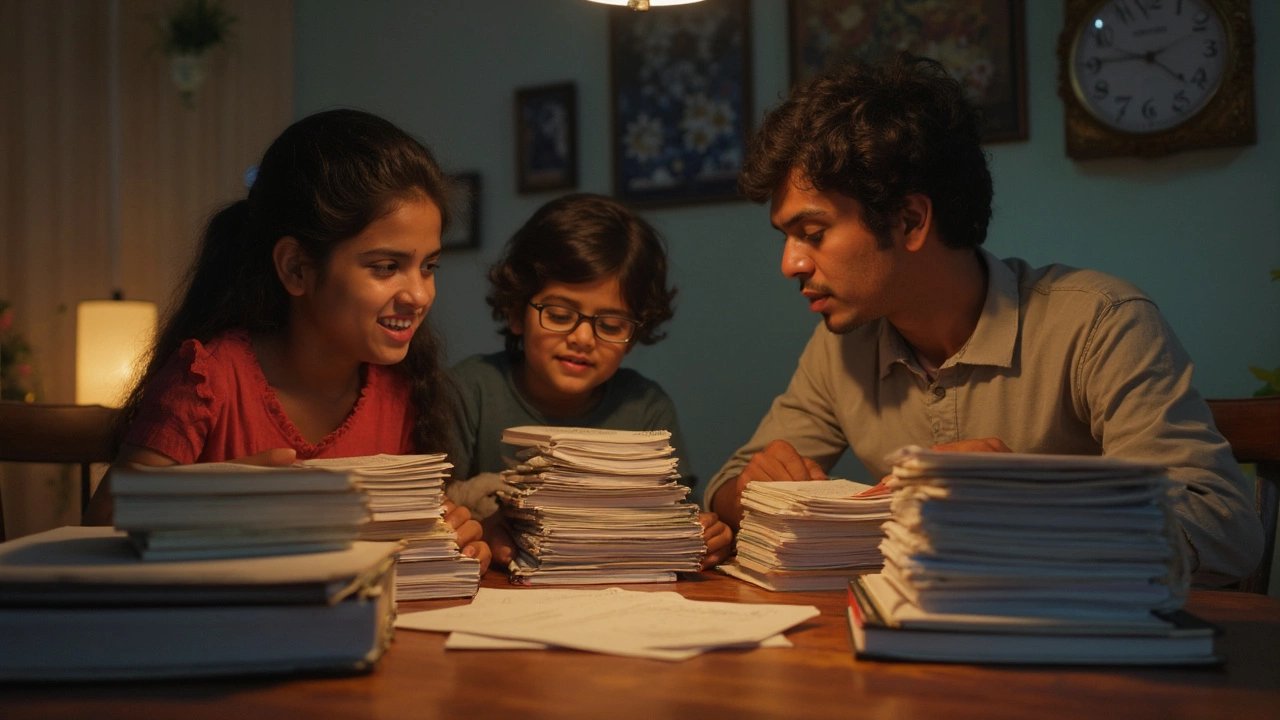
Teaching Styles and Testing: Apples or Oranges?
This is where the CBSE vs American school debate really fires up. The way kids are taught and tested is so different, you’d think they’re not even aiming for the same goals. In CBSE classrooms, it’s all about sticking to the book. Teachers usually follow the syllabus word for word, and you’ll find a lot of focus on theory, definitions, and step-by-step methods. If there’s a science topic, your kid is expected to know textbook explanations almost like a script.
American schools flip that approach. Teachers tend to push kids to ask “why” and “how.” Instead of repeating definitions, students often work on projects, share group presentations, and talk about real-life examples. Grades aren’t just about what you remember—they check if you can use facts, argue your point, or solve random problems on the spot.
Testing is just as different as teaching. CBSE loves that annual, board-style exam. Everything hangs on a couple of important tests, usually heavy with short and long answers straight out of the book. In high school, most subjects have one big final that can pretty much decide your whole grade for the year. You’ll also see a lot of standardized paper-based exams, so if your child hates cramming, that’s real pressure.
In contrast, American schools break grades into smaller parts all year round. There are quizzes, classwork, projects, and assignments. The final exam? Sometimes it’s there, sometimes not; rarely does it count for everything. Lots of teachers even let students redo assignments or offer extra credit. That flexible grading style can really lower the heat for some kids.
Need to see the core differences? Here you go:
| Feature | CBSE | American School |
|---|---|---|
| Teaching Style | Textbook-focused, teacher-centered | Discussion, projects, student-centered |
| Testing | Annual exams, theory-heavy | Continuous, projects & quizzes |
| Grading | Mostly based on final exam | Split across many tasks |
| Flexibility | Low | High |
Parents notice the difference fast. If a kid used to the CBSE syllabus jumps into American school, they might love the group activities—or feel lost when nobody tells them exactly what to write. On the flip side, moving to CBSE can be daunting if your child likes open-ended questions and finds rote memorization tough. Knowing how the system works helps you spot your kid’s strengths and gives you talking points for teachers when things get bumpy.
Student Life: Stress, Flexibility, and Support
When people talk about CBSE vs American school, student life often gets left out of the conversation. But honestly, that’s where the differences hit home. If you ask kids, many in the CBSE system feel a lot of stress, especially as exams get closer. CBSE puts heavy weight on final tests and board exams, so students often find themselves grinding through long study hours. It’s common for CBSE kids to go to after-school coaching just to keep up. A friend’s daughter in 10th grade told me she studies for almost three extra hours each night, just to handle the course load. No joke—sometimes it feels like the books never end.
American schools, on the other hand, usually spread out grades over projects, quizzes, homework, and class participation. It means kids aren’t always sweating over one big final. They also get more chances to retake tests or fix grades with extra assignments, which can lower the stress a bit. Plus, subjects like art, drama, and sports actually count toward their GPA, so there’s a real sense that life isn’t just about books and notes.
Here’s something you might find eye-opening. In a 2023 survey (National Institute of Education Sciences), 67% of CBSE students said exam pressure was their biggest source of stress. Only 39% of American high schoolers answered the same way—for them, balancing activities and social life was a bigger headache.
| System | Main Source of Stress | Flexibility | Support Offered |
|---|---|---|---|
| CBSE | High-stakes exams | Low | Tutoring/extra classes |
| American | Multiple responsibilities | High | Counselors/extracurriculars |
Parents should also know that support looks pretty different. In the CBSE world, students lean on private tuitions or coaching centers. In the US, kids have easier access to school counselors, mental health support, and even peer study groups run by teachers. If your child is switching from one system to the other, expect them to need time (and encouragement!) to adapt.
What helps kids cope? Here are some things that actually work:
- Keep open talks with your child about their stress levels—don’t wait for things to blow up.
- Set aside time for breaks, hobbies, or family fun, especially during exam-heavy stretches in CBSE.
- If you're in the US system, push your kid to try at least one non-academic club—it’ll count for something and give their brain a break.
- For CBSE students, group study (even online) feels less lonely than going it alone.
Every system brings its own challenges, but knowing what’s coming can help students (and parents) dodge the worst of the stress.
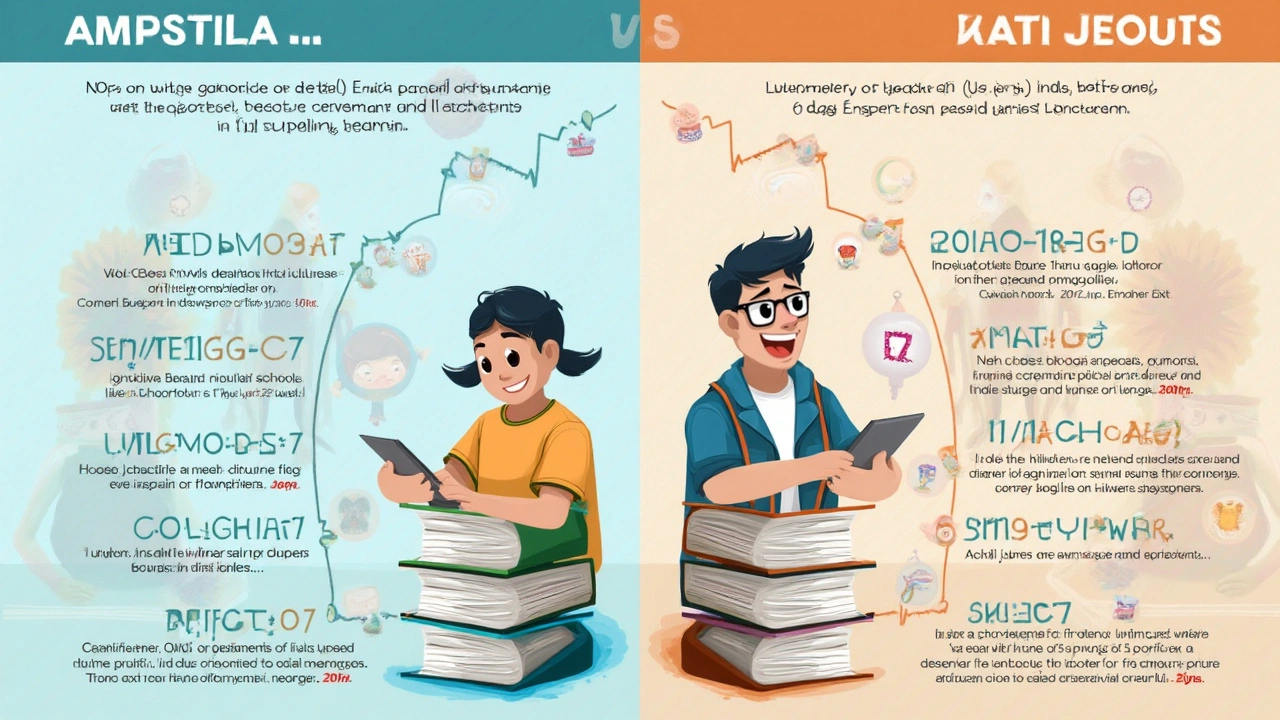
Tips for Parents and Students Facing the Switch
Switching between CBSE and American school isn’t just a change in textbooks, it’s a big shift in the whole way students work, socialize, and handle pressure. It can honestly feel like landing in a new country where the rules are familiar, but nothing works exactly the way you expect.
Here’s a bunch of practical tips based on what works in real life, not just what’s in the guidebooks:
- Get familiar with grading: In CBSE, a lot rides on board exams—one or two finals can decide your grade. In American schools, your grades usually come from a mix of homework, projects, tests, and class participation. If your kid’s new to this, help them set up a calendar to track deadlines and study time.
- Build study habits early: Many students who move from American school to CBSE hit a wall with the theory-heavy approach. Practice breaking down big chapters and using tools like flashcards, summaries, or group study. Don’t cram—spread the workload.
- Work on speaking up: In most American classrooms, questioning the teacher or joining debates is just normal. In CBSE, some kids feel shy to speak up in class. Encourage your child to ask questions—they might need to get used to a different way, but it will help with understanding and confidence.
- Don’t ignore extracurriculars: American schools often weigh extracurriculars heavy—sports, arts, volunteering. CBSE students sometimes miss out because there’s so much focus on marks. Find local clubs or after-school groups, even if the school doesn’t push them. It gives kids an edge if you ever plan to switch back or apply abroad.
- Watch for stress signs: On both sides, stress can creep up for different reasons, whether it’s the pressure of board exams in CBSE or juggling activities in American schools. Check in with your child. Simple routines—regular sleep, tech time-outs, exercise—make a genuine difference.
If you’re curious about how the workload stacks up, check this out:
| System | Main Grading | Homework (hrs/week) | Major Test Frequency |
|---|---|---|---|
| CBSE | Final Exams | 10-14 | 2/year (Boards + Internals) |
| American School | Continuous (Assignments, Projects) | 7-10 | 4-6/year (Quarterly/Unit Tests) |
When we moved, I set up short daily chats with Tarun about what was confusing or new. It becomes way less overwhelming when someone’s listening without judging or lecturing. Also, connecting with other parents who’ve made the switch can give you shortcuts and resources nobody tells you about in orientation meetings. Bottom line? Take each day as it comes, and don’t stress about being perfect right away. Adjusting is a process, not a race.
